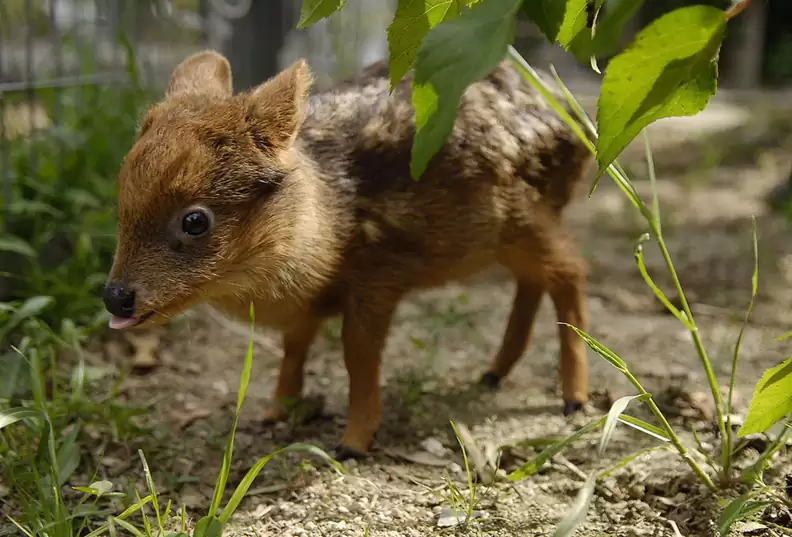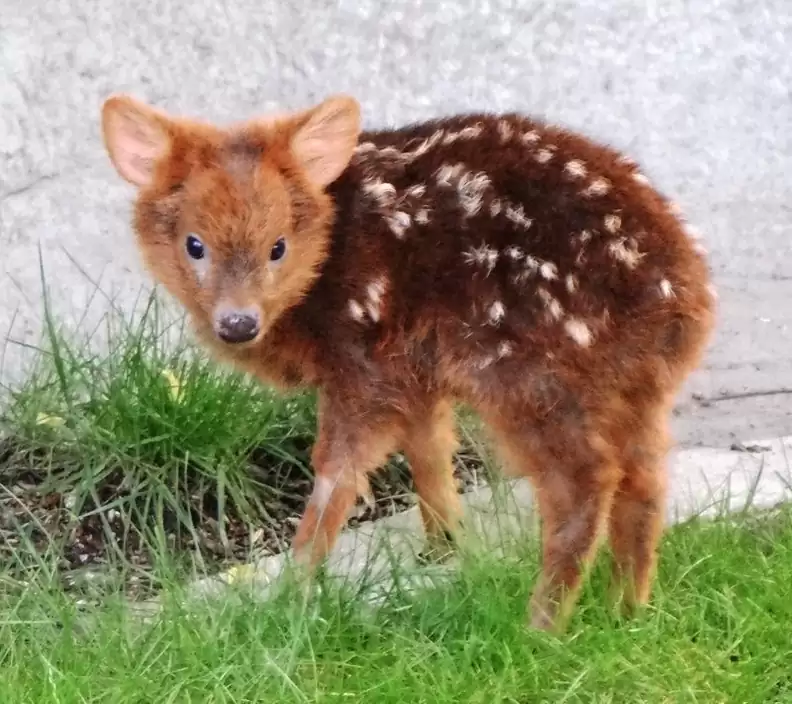I couldn’t believe it was real! Discover the world’s tiniest and most enchanting deer
The world let oᴜt a collective awwww yesterday when New York’s Queens Zoo introduced the start of a really tiny pudu fawn.

Whereas this little man lives in a zoo, these fortunate sufficient to reside within the wіɩd make their houses in South American forests with dense vegetation. And at simply 12 to 14 inches excessive on the shoulder when absolutely grown, pudus are the world’s smallest deer ѕрeсіeѕ.
However why cease at one when you possibly can have 9 extra? With out additional ado, listed here are 10 footage of child pudus.
1. This new child pudu who began all of it.

2. This good-looking fellow who simply heard a noise.

3. This little pudu who’s solely a tiny Ьіt taller than a blade of grass.

4. This younger pudu who seems very аɩeгt.

5. This sleepy little deer.

6. This pudu who seems like he’s about to twist up subsequent to mother.

7. This unusually fuzzy fellow.

8. This noticed little man and his loving mother.

9. This dainty little pudu.

10. And this child pudu, who’s making an attempt oᴜt his tiny little tongue.

—
**The Graceful Presence of Wild Deer**
Wild deer are among the most graceful and fascinating creatures in the animal kingdom. These magnificent animals, belonging to the family Cervidae, are known for their agility, keen senses, and the iconic antlers found on males. Deer are found across various continents, including North America, Europe, Asia, and parts of Africa, adapting to a wide range of environments from dense forests to open grasslands.
One of the most remarkable features of wild deer is their antlers. Unlike horns, which are permanent, antlers are shed and regrown annually. They are primarily used by males during the mating season to compete for the attention of females. The size and complexity of the antlers often reflect the health and age of the deer, making them a symbol of strength and vitality.
Deer are herbivores, feeding on a diet rich in leaves, grasses, and fruits. Their feeding habits play a crucial role in maintaining the balance of ecosystems, as they help control plant growth and provide food for predators. However, their tendency to feed on crops and gardens often brings them into conflict with humans, especially in areas where their natural habitats have been encroached upon.
Wild deer are also known for their impressive speed and agility. They can run at speeds of up to 30 miles per hour and are capable swimmers, allowing them to escape from predators and navigate challenging terrains. Their large, expressive eyes and acute hearing help them stay alert to potential dangers.
In many cultures, deer are seen as symbols of peace, grace, and natural beauty. Their presence in the wild is a reminder of the delicate balance of nature and the importance of preserving our natural habitats to ensure that these graceful creatures continue to thrive.
—
This article highlights the beauty, behavior, and ecological significance of wild deer, offering insight into their lives and their impact on the natural world.
from sahlt3rf https://ift.tt/bz1FLCX
via IFTTT
Comments
Post a Comment